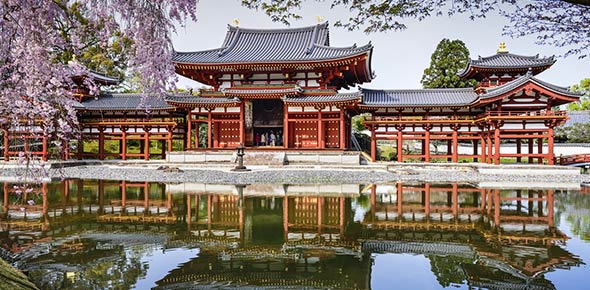Medieval Japan Art And Architecture Go!!

Use your mad skills (gained from the essay) to do this quiz. Medieval Japan Art and Architecture GO!
Questions and Answers
- 1.
What are other/previous names for origami?
- A.
Iagorni
- B.
Zhe zhi
- C.
Chicken and waffles
- D.
Tatamigami
Correct Answer(s)
B. Zhe zhi
D. TatamigamiExplanation
Zhe zhi and tatamigami are other/previous names for origami.Rate this question:
-
- 2.
What is lacquer?
- A.
A shiny red or black coating used in paintings
- B.
Just another word for watercolors
- C.
I have no idea what that even is
- D.
Your sidekick, as Robin is to Batman
Correct Answer
A. A shiny red or black coating used in paintingsExplanation
Lacquer is a type of coating that is commonly used in paintings to give them a shiny and smooth finish. It is usually available in red or black colors and is applied to the surface of the painting to enhance its appearance and protect it from damage.Rate this question:
-
- 3.
What did the Japanese paint their paintings on?
- A.
Silk
- B.
Steamed rice
- C.
Paper scrolls
- D.
Nori (the seaweed used in sushi)
Correct Answer(s)
A. Silk
C. Paper scrollsExplanation
The Japanese painted their paintings on silk and paper scrolls. Silk was a popular medium for painting due to its smooth texture and ability to hold vibrant colors. Paper scrolls were also commonly used, providing a convenient and portable surface for artwork. Both silk and paper scrolls allowed for intricate and delicate brushwork, which was highly valued in traditional Japanese painting.Rate this question:
-
- 4.
True or False: Indians called origami "zhe zhi".
- A.
True
- B.
False
Correct Answer
B. FalseExplanation
The statement is false because Indians do not call origami "zhe zhi". The term "zhe zhi" is actually the Chinese word for origami. Origami is the Japanese art of paper folding, and it is not referred to as "zhe zhi" in India.Rate this question:
-
- 5.
True or False: Origami butterflies represented the bride and groom in Shinto weddings.
- A.
True
- B.
False
Correct Answer
A. TrueExplanation
In Shinto weddings, origami butterflies are used to represent the bride and groom. This tradition symbolizes the transformation and beauty of the couple as they embark on their new journey together. Origami butterflies are delicate and intricate, just like the bond between the bride and groom. They also represent grace, elegance, and the fleeting nature of life, reminding the couple to cherish each moment of their marriage. Therefore, the statement "Origami butterflies represented the bride and groom in Shinto weddings" is true.Rate this question:
-
Quiz Review Timeline +
Our quizzes are rigorously reviewed, monitored and continuously updated by our expert board to maintain accuracy, relevance, and timeliness.
-
Current Version
-
Mar 20, 2023Quiz Edited by
ProProfs Editorial Team -
Apr 07, 2014Quiz Created by
SG19
do you know about manga and anime culture in japan? quiz
do you know about manga and anime culture in japan? quiz
Japan Travel Guide Quiz: Which Place Should You Visit First?
Japan Travel Guide Quiz: Which Place Should You Visit First?
 Back to top
Back to top


